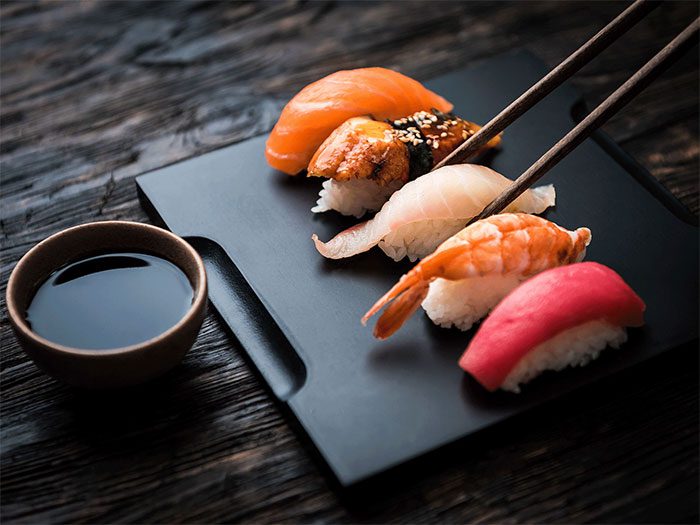Raw dishes are a distinctive feature of Japanese culinary culture. When stepping into this country, one can find it everywhere from restaurants to street food stalls, with raw ingredients helping the Japanese create world-famous delicacies like sashimi, sushi, and tekkadon. Among these, raw fish is the most commonly used ingredient in Japan.
In Japan, raw fish is a staple food in the nation’s cuisine. Although it may seem strange to some Westerners, eating raw fish has been a part of Japanese culture for centuries.
Why do the Japanese enjoy eating raw fish?
As an island nation surrounded by the sea and experiencing changing ocean currents throughout the year, Japan has a rich and diverse seafood supply. According to statistics, each Japanese person consumes fish five times more than individuals in other countries.

Each Japanese person consumes fish five times more than individuals in other countries.
The history of consuming raw fish dates back to the 8th century when fishermen would catch seafood daily and prepare it on their boats before returning home. This method allowed them to enjoy the freshness without adding any preservatives or cooking techniques that could alter its flavor or nutritional value.
Over time, this method evolved into what we now call sushi—rice combined with freshly caught seafood wrapped in seaweed.
Raw fish is considered nutritious, easy to digest, and tastier when eaten fresh. Additionally, this type of food offers numerous health benefits due to the presence of essential omega-3 fatty acids and other nutrients. Eating raw fish can help reduce inflammation throughout the body, improve cardiovascular health, boost immunity, and even lower stress levels.
Moreover, compared to cooked foods, which can lose many nutritional values during the cooking process, the Japanese choose to eat raw foods to preserve their nutrients and flavors.
Not only does raw fish provide abundant nutrition, but its original delicious flavor also explains why the Japanese love to eat it. Raw seafood often has a milder taste than cooked varieties, making it an ideal dish for those who prefer less intense flavors. Eating raw fish is not only beneficial for health but also allows us to enjoy the gifts nature offers.
Japanese Tips for Eating Raw Fish Safely
Despite being fresh and nutritious, consuming any type of raw seafood carries some health risks. They can be contaminated with heavy metals, parasites, or harmful bacteria such as salmonella or E. coli. Therefore, to minimize toxins in seafood, the Japanese have developed special methods to make eating raw fish safer.
Firstly, the fish used to create dishes like sushi and sashimi is often carefully selected. The Japanese typically choose seafood caught in coastal regions because the fish here is delicious and nutrient-rich. These fish must ensure maximum freshness and are kept in a frozen state. This way, bacteria and parasites cannot survive and develop.
While most grocery stores keep their seafood in refrigerators at temperatures ranging from 33°F (1°C) to 41°F (5°C), professional chefs at top sushi restaurants maintain much lower temperatures, around 28°F (-2°C).

The fish used to create dishes like sushi and sashimi is often carefully selected.
Next, traditional Japanese preparation methods can also help reduce potential health risks associated with eating raw fish. For example, chefs may treat certain types of salmon with a special vinegar called “su” during food preparation—this process eliminates harmful microorganisms like listeria monocytogenes often found in imported farmed salmon.
Additionally, dishes like sushi or sashimi are skillfully paired with soy sauce and wasabi when eaten. This combination enhances the dish’s flavor and simultaneously these two condiments have high detoxifying properties, helping to inhibit and reduce the accumulation of bacteria, heavy metals, and parasites. Dipping sauces like soy sauce, ginger, or certain herbs like perilla and mint are also used by the Japanese to help eliminate harmful bacteria and parasites that may be present in fresh seafood.
Thanks to these tips, the Japanese raw dishes not only taste fresh but also remain safe for human health.

















































